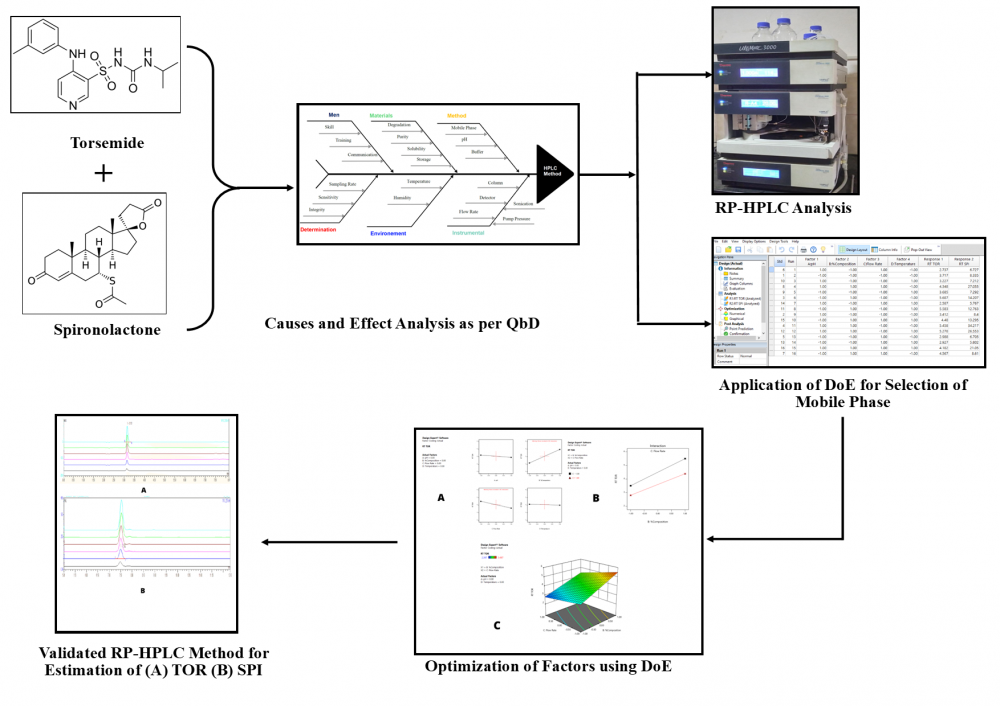JOURNAL 2769
Journal of Chemical Metrology
Year: 2023 Issue: 2 July-December
p.148 - 169
Viewed 2120 times.
GRAPHICAL ABSTRACT

ABSTRACT
In a Quality by Design (QbD) approach, the impact and interaction of critical variables are understood and optimized using Design of Experiment (DoE). DoE includes statistical multivariate analysis and modeling of data for continuous improvement of method. In present research work 24 full factorial design was applied to optimize and select appropriate chromatographic condition for the RP-HPLC method development of Torsemide (TOR) and Spironolactone (SPI) in synthetic mixture. The drug was analyzed using a LiChrospher® C 18 (5µm, 250×4 mm) and a mobile phase of acetonitrile: buffer (57.4:42.6 v/v) at a flow rate of 1 mL/min, with TOR showing considerable absorbance at 290 nm and SPI showing significant absorbance at 238 nm. For TOR and SPI, the technique was shown to be linear over the concentration range of 2–12 μg/mL and 10–60 μg/mL, respectively. LOD and LOQ values for TOR were 0.10 g/mL and 0.32 g/mL, respectively, whereas those for SPI were 0.75 µg/mL and 2.29 µg/mL. The correlation coefficient (R2) was found 0.9973 for TOR and 0.9976 for SPI. Recovery study for accuracy was found in the range of 97.55 % - 99.05% and 94.82%-100% for TOR and SPI respectively.
KEYWORDS- Torsemide
- spironolactone
- RP-HPLC
- validation
- QbD
- Measurement uncertainty